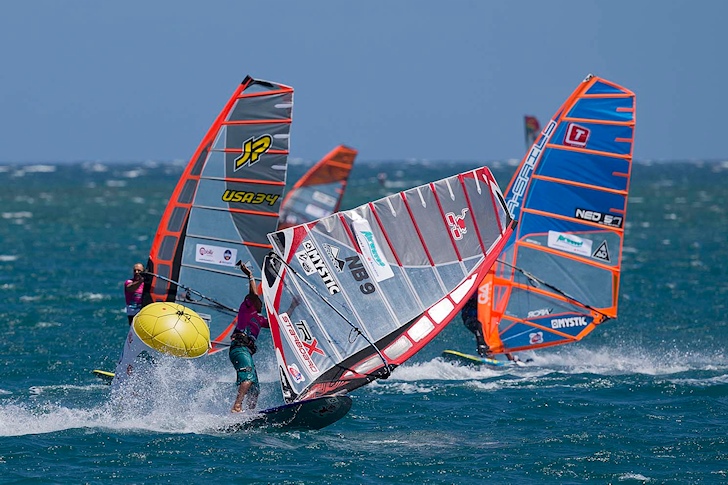If you've already trained your carve jibe, it's time to pull a perfect duck jibe to tighten up your turns.
The duck jibe is a classic windsurfing technique for intermediate and advanced sailors, in which you set up the move by carving, ducking, and exiting in a matter of seconds.
Balance and timing are critical variables when duck jibing.
If you've never tried it, look for suitable conditions to train it, i.e., shallow flat waters and winds ranging between 12 and 20 knots.
Duck Jibe 101
Here's how to perform a flawless duck jibe:
- Sail fast, broad, adopt a wide grip, unhook, take the back foot out of the strap as for a jibe, but don't carve, just blast;
- Sink your feet solidly, keep the shoulders back and pull the rig close to the body as you release the front hand and angle the mast forward but downwind of the board;
- The released front hand grabs the boom firmly near the clew, well past the remaining back hand. Immediately, release the old back hand and let the mast drop down into the turn;
- Crucially wait for the second to allow the mast to drop and swing into the turn; this helps "present" the boom in front of your body;
- Pull the rig firmly across the body and upright with the remaining back hand, as if trying to throw a ball across and then behind you;
- Ideally, grab the boom forward of the front harness line fixing with the front hand. But a very quick shuffle of the hands along the boom is quite common;
- Switch your feet and sail away;
Remember that the duck jibe technique requires speed; try to keep the board rolling while going for a fluid duck.
Also, avoid ducking and sheeting in too early.
The duck jibe is one of the many techniques you can test and train with the guiding help of "RYA Advanced Windsurfing."
